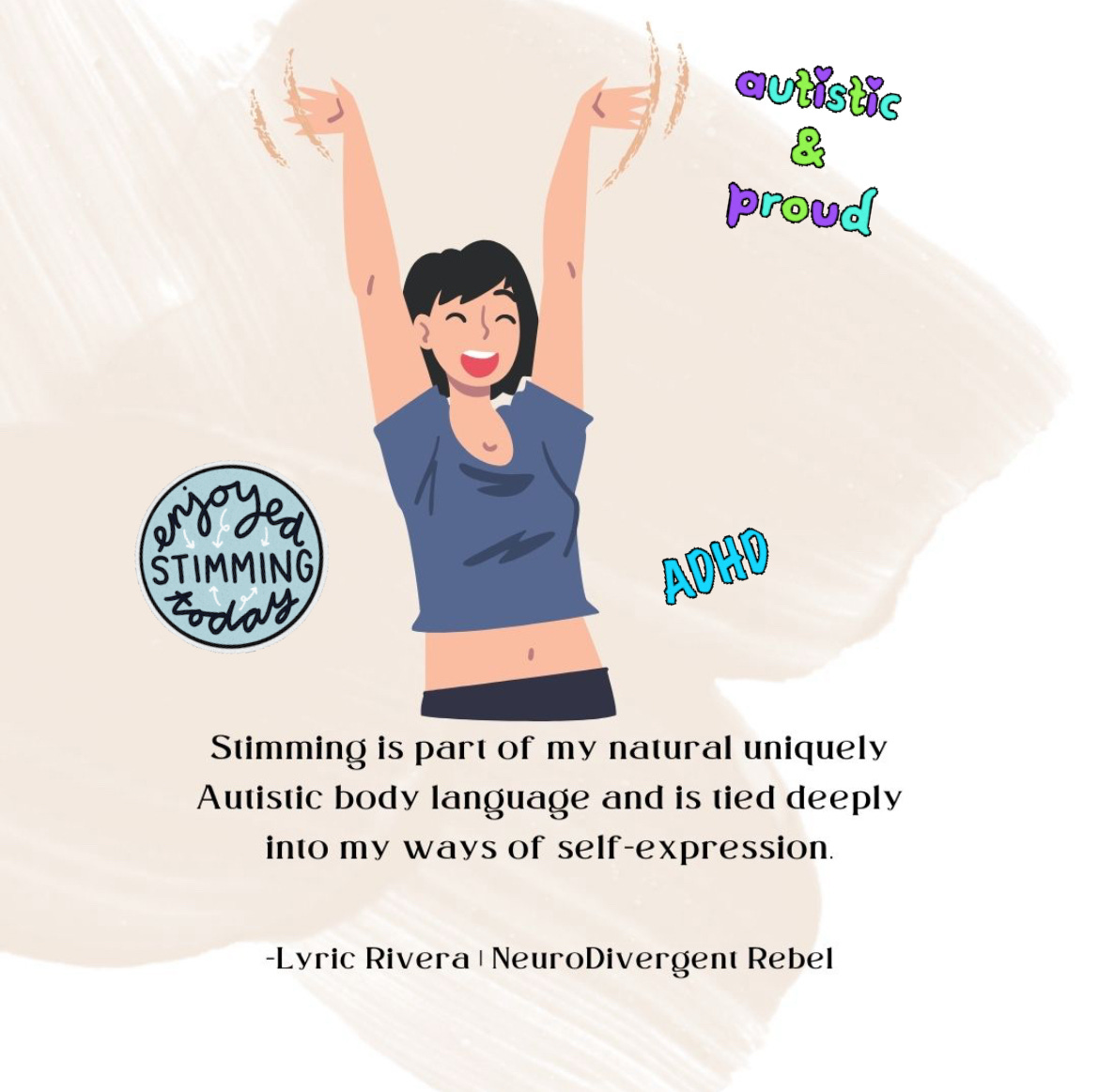Stimming: The Good, the Bad, the Beautiful, and the Ugly Side of Stimming
Some common examples of stimming include "arm or hand flapping, finger-flicking, foot or finger tapping, snapping fingers, rocking, and spinning."
What IS Stimming?
If you spend any time in Autistic spaces, one word you are likely to come across early is "stimming." Stimming is something that, technically, all humans (and many animals) do. However, Autistic People (and ADHDers) tend to stim and fidget more.
As I've often done with my Videos (which I plan to return to in the new year once my first book is wrapped up), when things have medical definitions, I like to start with those and then expand on them with a more humanized explanation (based on my lived experience as an Autistic ADHDer (AuDHD).
First let’s start with stimming in a medical context:
Stimming (a noun) is defined as: “the repetitive performance of certain physical movements or vocalizations, as a form of behavior by persons with autism or other neurodevelopmental conditions; self-stimulation. This behavior is thought to serve a variety of functions, such as calming and expression of feelings. "stimming was part of her coping mechanism" - Definition from Oxford Languages

According to the popular website Better Help, some common examples of stimming include "arm or hand flapping, finger-flicking, foot or finger tapping, snapping fingers, rocking, and spinning."
Most medical definitions do not distinguish stims tied to body language, communication, and self-expression from those linked to soothing and self-regulation.
Outsiders (medical professionals who are not Autistic) also often fail to mention the difference between conscious and subconscious stimming and sensory seeking.
Human definition:
When we look at the medical definition, more than half of it describes what outsiders see when they watch a person stimming and stimming's functions are but a footnote within the description that misses an opportunity to connect people who do not stim or understand stimming with the human side of stimming.
Medical definitions of stimming, in my opinion, never do this phenomenon justice.
Sometimes, stims can be experienced as tics and muscle spasms (which can be pretty painful, and I'll share more on that in a moment), but that last sentence (that people often glaze over) is where the "magic" of stimming really happens.

What stimming does/why it's essential.
Stimming serves "a variety of functions, such as calming and expression of feelings."
Paid subscribers have access to the full post as a thanks for supporting my work.
Keep reading with a 7-day free trial
Subscribe to NeuroDivergent Rebel’s Substack to keep reading this post and get 7 days of free access to the full post archives.



